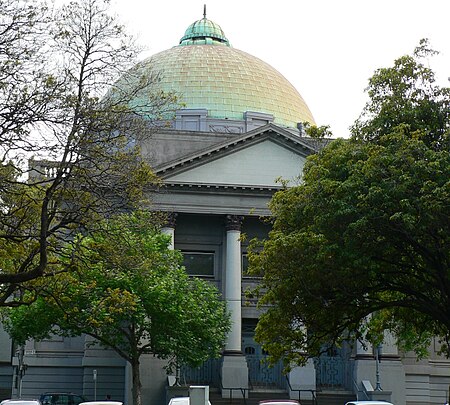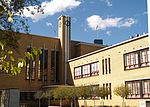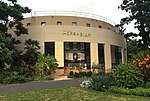Melbourne Hebrew Congregation
1841 establishments in AustraliaModern Orthodox synagoguesReligious organizations established in 1841Synagogues completed in 1841Synagogues in Melbourne ... and 1 more
Use Australian English from February 2015

The Melbourne Hebrew Congregation (Hebrew: ק"ק שארית ישראל), or Toorak Shule, is the oldest Jewish congregation in Melbourne, Victoria, Australia. Formed in 1841, the congregation was originally located on Bourke Street before moving in 1930 to Toorak Road, South Yarra.
Excerpt from the Wikipedia article Melbourne Hebrew Congregation (License: CC BY-SA 3.0, Authors, Images).Melbourne Hebrew Congregation
Arnold Street, Melbourne South Yarra
Geographical coordinates (GPS) Address Website External links Nearby Places Show on map
Geographical coordinates (GPS)
| Latitude | Longitude |
|---|---|
| N -37.8365 ° | E 144.9766 ° |
Address
Melbourne Synagogue
Arnold Street
3004 Melbourne, South Yarra
Victoria, Australia
Open on Google Maps










